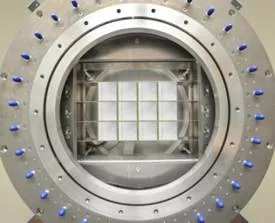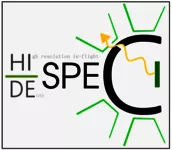HISPEC/DESPEC Experiment
Lund activities within the FAIR-NUSTAR HISPEC/DESPEC experiment
The HISPEC/DESPEC experiment is embedded in the NUSTAR science pillar of the European FAIR accelerator complex located near Darmstadt, Germany, built as extension to the GSI Helmholtzcentre for Heavy Ion Research. The HISPEC/DESPEC science case concerns γ-ray based nuclear spectroscopy of fast radioactive ion beams produced in relativistic fission or nuclear fragmentation reactions.
At FAIR, the HISPEC (HIgh-resolution in-flight SPECtroscopy) and DESPEC (DEcay SPECtroscopy) set-ups are to be located in the Low-Energy Branch (LEB) in one of the focal planes of the Super-conducting FRagment Separator (Super-FRS). The Super-FRS is envisaged to send fast radioactive ion beams, so-called fragments, with exotic neutron-to-proton ratios into the LEB at energies of a few hundred MeV per nucleon.
For HISPEC, the combination of (i) beam tracking and identification detectors prior to the secondary target station, (ii) the Advanced GAmma-ray Tracking Array (AGATA) surrounding the target, and (iii) outgoing particles being identified by time-of-flight, energy loss, and total energy (LYCCA) and/or a magnetic spectrometer, will allow for high-resolution in-beam γ-ray spectroscopy of excited states of exotic nuclei moving at relativistic velocities. Following engagement within scientific precursors of HISPEC-DESPEC at GSI, we contribute parts of LYCCA to HISPEC in the framework of Swedish in-kind contributions to FAIR. About half of LYCCA was already in use during the PreSPEC science campaign at GSI 2012-2014 (see figure to the right).
DESPEC set-ups can employ different combinations of radiation detector systems to study observables associated with the decay of excited states or ground states of exotic nuclei after they have been put to rest. The decays are commonly correlated with signals registering the arrival and implantation of the nuclei on an event-by-event basis.
Links to external pages:
- Facility for Antiproton and Ion Research (FAIR), Darmstadt, Germany
- NUSTAR collaboration at FAIR
- HISPEC-DESPEC experiment within NUSTAR at FAIR
- PreSPEC campaign at GSI
- AGATA collaboration
- HISPEC/DESPEC
- LYCCA
- PreSPEC-AGATA
- Main Publications
- Student Theses
Nuclear Structure
Back to the main page for Nuclear Structure



